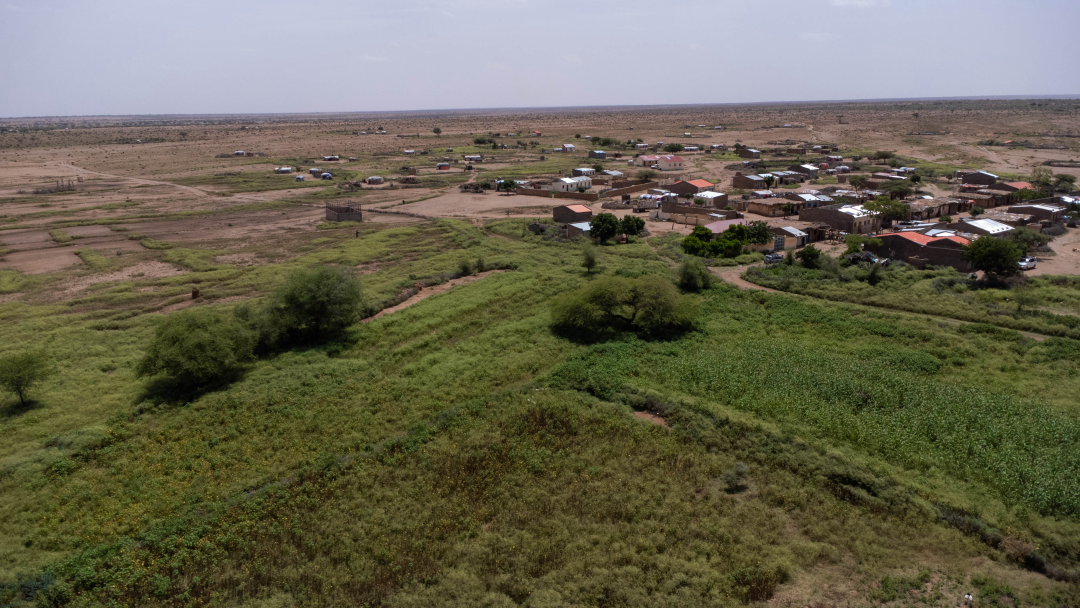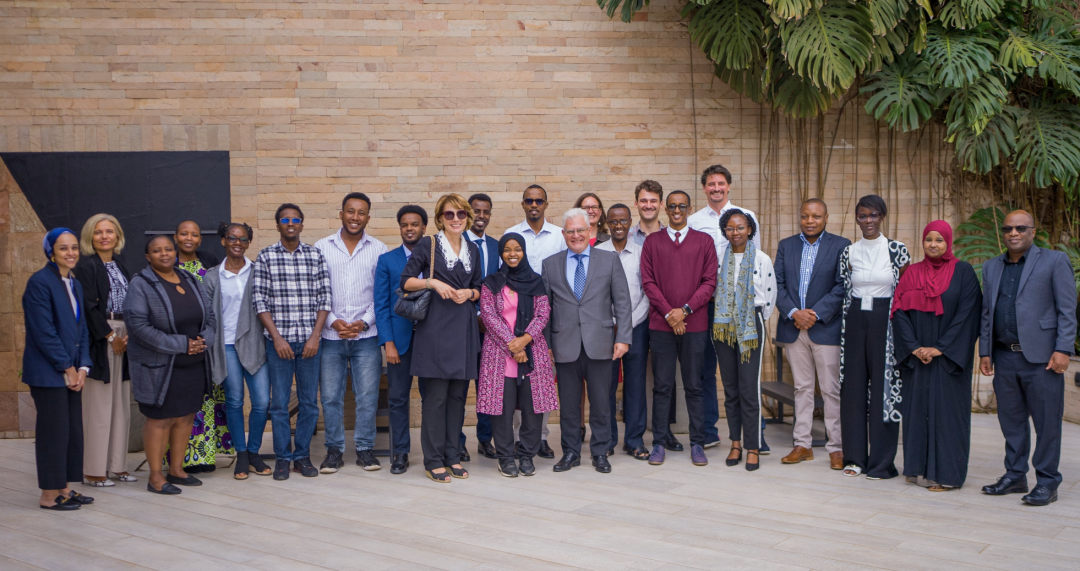Disclaimer:
Please be aware that the content herein has not been peer reviewed. It consists of personal reflections, insights, and learnings of the contributor(s). It may not be exhaustive, nor does it aim to be authoritative knowledge.
Overview
Prepared by (Name of the experimenter)
Abdullahi Hashi
On date (Day/Month/Year)
10/07/2024
Current status of experimental activity
Completed
What portfolio does this activity correspond to? If any
Resilience
What is the frontier challenge does this activity responds to?
Environment and climate change
What is the learning question(from your action learning plan) is this activity related to?
What can local communities learn from one another to maintain vegetation around their settlements despite challenging conditions?
Please categorize the type that best identifies this experimental activity:
Quasi experimental (Analytical, observations, etc)
Which sector are you partnering with for this activity? Please select all that apply
Public Sector, Civil Society/ NGOs
Please list the names of partners mentioned in the previous question:
Ministries of environment, agriculture, and livestock of Somaliland.
Design
What is the specific learning intent of the activity?
What is the existing drought coping strategies and practices local communities apply and what can they learn from one another to maintain vegetation around their settlements despite challenging conditions?
What is your hypothesis? IF... THEN....
If local effective drought coping practices and solutions from positively deviant local communities is discovered, then we will be able to expose and transfer viable solutions to average performing villages with similar conditions to maintain and enhance the health of their rangelands.
Does the activity use a control group for comparison?
No, it does not use a control group
How is the intervention assigned to different groups in your experiment?
Non-random assignment
Describe which actions will you take to test your hypothesis:
The experiment we carried out in 2023, focused on designing and implementing an intervention to transfer the successful practices from positive deviant villages to average-performing villages. The objective was to combat desertification and enhance resilience to droughts in villages with compromised rangelands. Two villages were selected as target villages for the intervention, an average-performing village, Xumbo-Weyne, and an outperforming village, Qaloocato. Through the BDA process, Xumbo-Weyne village members were able to uncover the solutions developed by the Qaloocato village and developed an action plan with their village members to adopt those solutions.
Overall, the DPPD Somalia Pilot emphasizes the importance of learning from villages that have achieved positive outcomes and leveraging their strategies to improve rangeland management. By promoting locally-sourced solutions and incorporating data-driven approaches, this pilot aims to contribute to the sustainable development and resilience of pastoralist communities in Somalia.
When designing the experiment to transfer solutions from village community to another, we took the village members involvement and village leaders' receptiveness into account. Our goal was to ensure that the village members were in charge and the village leaders were willing to participate. Accordingly, we designed a three-step process applied across three field visits for the diffusion of practices and strategies of the outperforming community. This process required the selection of an average performing and an outperforming village having very similar sociodemographic and biophysical conditions but contrasting rangeland health conditions. The Buy-in, Discovery, Action (BDA) process steps are as follows:
1. Buy-in at the ND Village: Introduce the PD approach to the ND village members and leaders to get their
consensus and buy-in. If they agree to participate, they should select representatives to visit the PD village.
2. Discovery at the PD village: representatives of the ND village are exposed to the practices and strategies applied by
members of the PD village to address rangeland degradation challenges (social proof). The visit begins with an in-depth interview with the village leader of the PD village, followed by a focus group discussion with the village members, and will conclude with site visits to see the solutions in action. The visit aims to mobilize the representatives of the ND village to convince their village members to adopt similar practices.
3. Action at the ND village: ND village representatives share what they heard and saw in the PD village with other village members. Together, they should reach an agreement on potential interventions for their village and develop an action plan for their implementation.
Our goal was to create an inclusive co-creation process where individual and collective action will lead to sustained and impactful behavioral change. The process design was guided by the following principles:
●The process is village/people-centered, driven, and owned
● There is willingness and commitment from the village authority to give the process a try
●The village and the individuals own the decision to opt in or opt out
● Focus on the ‘how’ (how the practices are done) and not just on the ‘what’ (the practices of positive
deviants) through social proof and situational learning (i.e. being there where things happen and seeing how they are done)
● “Seeing trumps hearing and doing trumps seeing": create opportunities for people to apply the practices and
strategies of positive deviants’ solutions themselves and slowly make them part of their routine through action learning programs.
● Village members should spend sweat equity in discovering the solutions of PDs and in designing action learning
programs to spread discoveries to others
Results
Was the original hypothesis (If.. then) proven or disproven?
The experiment proved the existence of some communities with special strategies to maintain their rangelands during and after the drought. these solutions are also transferrable to other communities with similar conditions. during the experiment, the average performing community selected a number of viable and transferable solutions from what they have discovered during their visit to positive deviant community. then, they had come up with an action plan of how to implement these solutions in their village. The execution of the action plan along with a remote sense analysis to be conducted will act as a monitoring and evaluation of the experiment.
Do you have observations about the methodology chosen for the experiment? What would you change?
To improve the BDA process for future use. These are some main findings on its application.
a) Adaptation: The guides and data collection tools should be modified to suit the varying needs and circumstances encountered in the field.
b) Village Selection: to select suitable target communities for experiment, engaging the local actors (NGOs, Gouvernement officials) who have a presence and knowledge of the research area and make selection based on their recommendations is a requirement
c) Selection of the ND reps: During the Buy-in visit at the ND village, it
was difficult to select representatives due to time constraints. This was done
in the following days in the absence of the field team. The representatives
chosen had the right mix of curiosity, interest, and diversity (gender, age,
and profession). They were highly active and contributed greatly to the Discovery
and Action steps of the BDA process. We concluded that allowing the village
members to select representatives without our involvement may be a better way
of doing the task.
d) Social Proof Works: The BDA process leverages social proof, an important element of the PD approach. This was evident in the Discovery visit when members of the outperforming village described the advantages of using natural pesticides. One of the ND representatives shared that although they had heard of the benefits before from an NGO, it was only after seeing
them in action at the PD village that they were considering implementing them into their action plan. This demonstrates the power of "seeing is believing".
e) Positive Unintended Consequences: During the discovery step, the field team observed that average performing representatives were knowledgeable about agricultural practices and recommended crops for the PD village to diversify their produce instead of just focusing on sorghum. These included crops with a short harvest period such as onions, watermelon, and tomatoes. They also advocated for using drip irrigation to reduce water losses and save water. This two-way exchange was an unexpected surprise. Another interesting observation was that the BDA process revealed latent PD. The process not only led to the discovery of uncommon practices in the PD village but also created a climate of inquiry in which the ND village could come up with new solutions “just waiting to be hatched”. For example, the ND reps already knew of the solutions suggested by the PD village to combat Prosopis. But, upon their return to the PD village, they conceived of a new idea—the large-scale peeling of tree trunks to make them dry up—as a way to fight Prosopis.
Learning
What do you know now about the action plan learning question that you did not know before? What were your main learnings during this experiment?
Active community participation particularly the village members and leaders are vital. Community buy-in
fosters ownership and commitment, increasing the likelihood of successful and sustainable implementation and direct exposure to successful practices (social proof) and hands-on learning were powerful motivating factors. These methods demystified the practices, making them relatable and achievable.
Through the solutions transfer process, emphasizing the "how" (implementation processes) rather than just the "what" (specific practices) enabled a deeper understanding and better adaptation of practices to the local context. the structured Buy-in, Discovery, Action (BDA) process facilitated also played a role in smooth transfer of practices. Each step—consensus building, exposure to successful practices, and action planning—was vital in creating a comprehensive pathway for change.
Encouraging behavioral change through a co-creation process led to a deeper commitment to the new practices. Collaborative development of action plans in the average performing area and ensured that the interventions were well-suited to the needs and capabilities of the community.
What were the main obstacles and challenges you encountered during this activity?
Relevance: It is important that solutions meet the needs and challenges of the village, this is achieved by letting the village members decide what is relevant and important.
Collectivism: In Positive deviant community village land is managed communally and many actions are handled at the village level such as the management of the public enclosures. This was different from Average performing community which is more individualistic, and land is mostly individually owned. This influenced the solutions that could be implemented in average community.
Proximity to urban areas and its impact on behavior: Observations showed that in Average community, which is closer to main urban city, people tended to engage in other non- income generating activities. In contrast, in PD, people were found working on the farms.
Who at UNDP might benefit from the results of this experimental activity? Why?
The experiment findings and scale-up could be benefitable for the UNDP internal portfolios, particularly for resilience, climate change, livelihoods and governance to utilize for their programmatic designs, interventions and proposals.




 2Zero hunger
2Zero hunger 6Clean water and sanitation
6Clean water and sanitation 8Decent work and economic growth
8Decent work and economic growth 10Reduced innequalities
10Reduced innequalities 11Sustainable cities and communities
11Sustainable cities and communities 13Climate action
13Climate action 15Life on land
15Life on land
Comments
Log in to add a comment or reply.